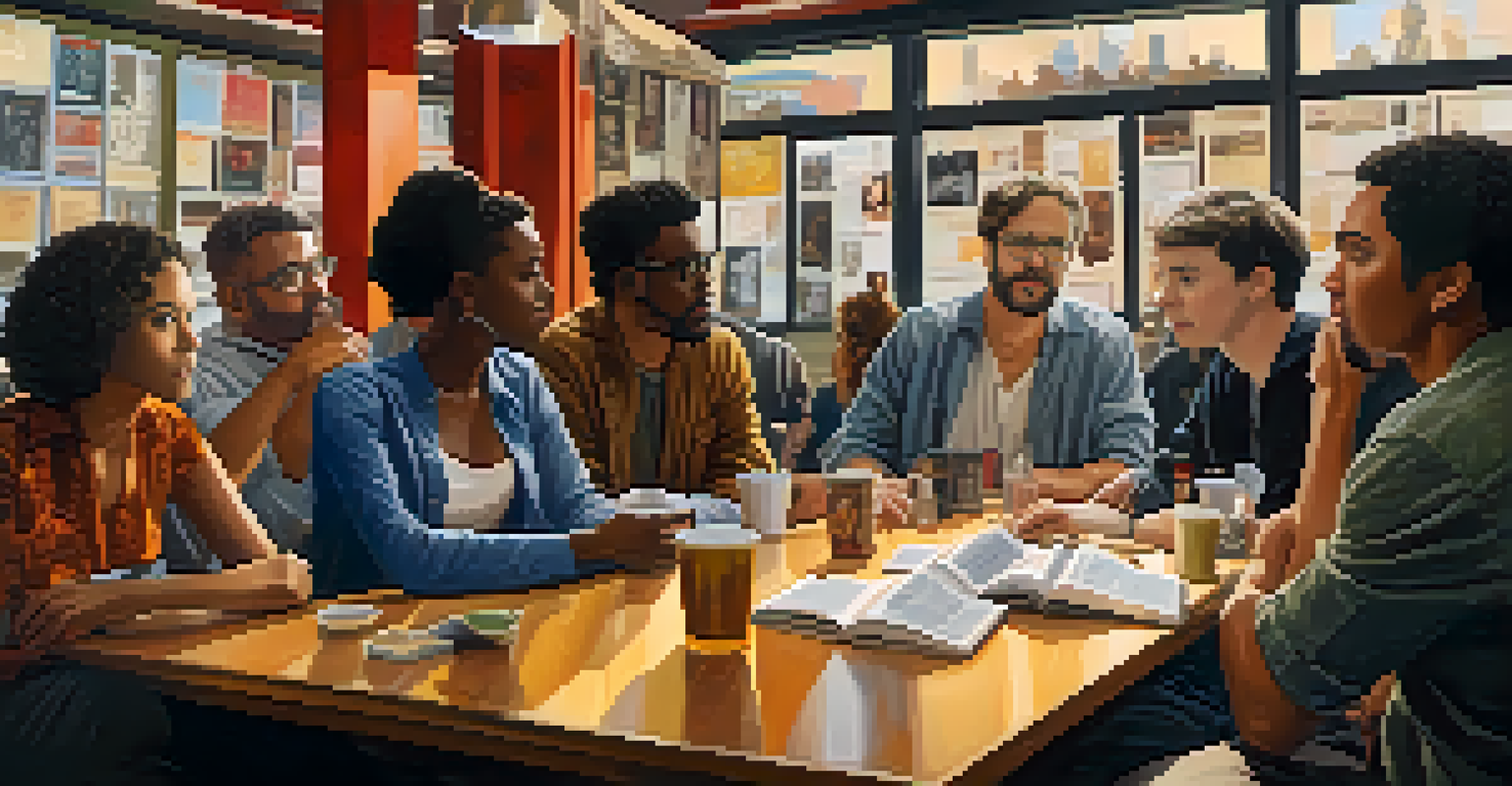Impact of Streaming Platforms on Film Critique Standards

Introduction to Streaming and Film Critique
The rise of streaming platforms has revolutionized how we consume films, making them more accessible than ever. This shift has not only changed viewing habits but also influenced the standards of film critique. With audiences now flooded with options, the role of film critics has evolved significantly.
The critics of the future will be those who embrace the chaos of the internet and make sense of it for everyone else.
Previously, critics served as gatekeepers, guiding viewers towards quality content. However, the democratization of film access through platforms like Netflix and Hulu has blurred these lines, allowing anyone with an account to voice their opinion. This change raises questions about the credibility and influence of traditional film critique.
As we delve deeper into this topic, we'll explore how streaming platforms impact the way films are critiqued, the emergence of new voices in criticism, and what this means for the future of film evaluation.
The Shift from Traditional to Digital Critique
In the era of print newspapers and magazines, film critiques were often penned by established critics with formal training. This gave their reviews a certain weight, as they were considered experts in the field. However, streaming platforms have shifted this paradigm, allowing ordinary viewers to share their thoughts online, often through social media or blogs.

This transition has led to an explosion of diverse perspectives in film critique, as anyone can become a critic with just a few clicks. The accessibility of platforms like Letterboxd and Rotten Tomatoes allows users to rate and review films, democratizing the conversation around cinema. While this broadens the dialogue, it also raises concerns about the depth and rigor of these critiques.
Democratization of Film Critique
Streaming platforms have transformed film critique by allowing anyone to share their opinions, challenging traditional critics' authority.
Ultimately, this shift signifies a change in standards for film critique, where popularity and virality can sometimes overshadow critical analysis.
Emerging Voices in Film Criticism
The accessibility of streaming platforms has given rise to a new generation of film critics who may not have traditional credentials. Influencers on platforms like YouTube and TikTok can amass large followings, often providing entertaining and insightful critiques that resonate with younger audiences. This has led to a more varied landscape of film criticism, where diverse voices can be heard.
In a world where everyone can be a critic, the challenge is to rise above the noise and offer genuine, thoughtful insights.
These emerging critics often focus on underrepresented films and genres, bringing attention to works that might otherwise be overlooked. They utilize relatable language and personal anecdotes that make their critiques feel more approachable. This informal style can sometimes connect more effectively with viewers than traditional critiques, which may feel elitist or detached.
As these new voices gain traction, they challenge the established norms of film criticism, prompting seasoned critics to adapt their approach to remain relevant.
The Role of Audience Engagement in Critique
Streaming platforms have fostered a culture of audience engagement that significantly impacts film critique. Viewers are not only consuming films but also participating in discussions, sharing opinions, and creating content around their favorite shows and movies. This engagement has turned the critique into a more interactive experience.
Platforms like Twitter and Instagram allow for real-time reactions, meaning critiques can evolve during the film's release and even after. This immediacy can offer fresh perspectives that traditional critics may not capture in their reviews. However, this fast-paced environment can lead to superficial analyses, overshadowing deeper critical discussions.
Emerging Voices Reshaping Discussion
New critics, particularly influencers on social media, are diversifying film analysis by focusing on underrepresented films and using relatable language.
The challenge lies in balancing quick engagement with thoughtful critique, prompting critics to find ways to engage audiences while maintaining rigorous standards.
Impact of Algorithms on Film Exposure
Streaming platforms heavily rely on algorithms to recommend films to users, which significantly influences what gets seen and critiqued. These algorithms often prioritize popular content, potentially sidelining lesser-known films that deserve attention. As a result, critics may find themselves responding primarily to mainstream hits rather than exploring a wider array of cinematic offerings.
This focus on algorithm-driven recommendations can create echo chambers where only certain genres or directors receive critical attention. Critics who wish to stand out may feel pressured to align their critiques with trending films, impacting the authenticity of their reviews. Consequently, this can lead to a homogenization of film critique, where originality takes a backseat to popularity.
The challenge for critics is to navigate this landscape, ensuring that they highlight diverse narratives while still engaging with mainstream successes.
Quality vs. Quantity in Streaming Content
The sheer volume of content available on streaming platforms has raised questions about quality in film critique. With new films and series being released weekly, critics are often inundated with material to review. This can lead to a situation where quantity overshadows quality, with critics feeling compelled to churn out reviews quickly.
In this fast-paced environment, in-depth analysis can sometimes be sacrificed for speed, resulting in surface-level critiques. Critics may find it challenging to delve into the intricacies of a film when they are constantly racing against the clock. This raises the question: How can critics maintain their standards while navigating the demands of streaming?
Navigating Quality in Abundance
The overwhelming volume of content on streaming services raises concerns about maintaining quality in film critique amidst the pressure for timely reviews.
Finding a balance between timely reviews and thoughtful analysis is crucial for maintaining the integrity of film critique in the age of streaming.
The Future of Film Critique Standards
As streaming platforms continue to evolve, so too will the standards of film critique. The blending of traditional and new forms of critique presents an exciting opportunity for growth in the industry. Critics must adapt to these changes, embracing new technologies and platforms to reach broader audiences while still upholding critical standards.
There's potential for collaboration between traditional critics and emerging voices, fostering a richer dialogue about film. This partnership can help bridge the gap between established critique methods and the fresh perspectives brought by new critics. Such collaboration could lead to a more comprehensive understanding of cinema in all its forms.

Ultimately, the future of film critique will likely be characterized by diversity, engagement, and a commitment to quality, ensuring that all films receive the thoughtful analysis they deserve.